In medicine, neck pain is called neck pain. According to the results of numerous screening studies, they occur in 12-72% of people of working age during the year. This means the sensationsfamiliar to almost everyone. . . In 1. 7-11. 5% of people, neck pain eventually leads to disability. Let's find out their causes and most common methods of treatment.
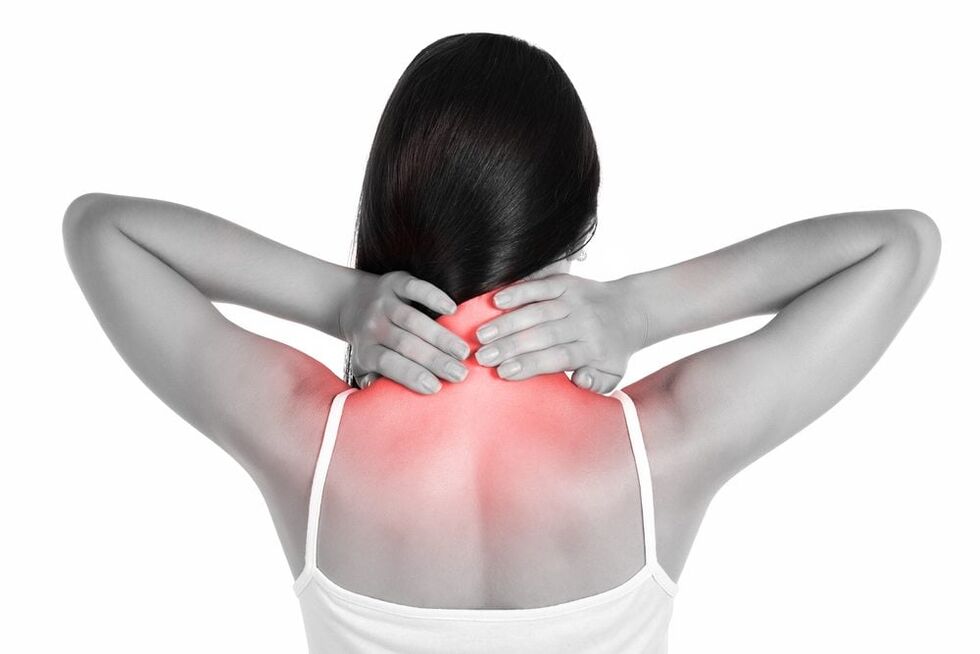
Classification of neck pain
All painful sensations in the neck are divided into acute and chronic. The first appear suddenly and have a pronounced character. They usually appear after hypothermia, strenuous exercise, or heavy lifting. Chronic pain sensations bother a person constantly, over a long period of time. They are mild, have a sore temper and worsen after sitting or sleeping in an uncomfortable position for a long time.
Depending on the locationthe pain is visceral, superficial and deep somatic. . . The first occurs due to damage to internal organs. Visceral (reflex) pain may indicate angina, esophageal or pharyngeal disease, acute thyroiditis, dissection of the vertebral or carotid arteries.
Superficial somatic pain occurs in the skin due to trauma or small scratches, located deep in the tissues. The reason for the appearance of the latter is usually muscle overload or pathology of the spine.
How to distinguish visceral pain from somatic pain? The first are diffuse in nature, that is, a person cannot determine their exact localization: they radiate to other parts of the body, are accompanied by nausea, vomiting, dizziness, fever, etc.
In 2008, the Neck Pain Task Perhaps proposed the following: tadia cervicalgia:
- The patient has no symptoms suggesting structural abnormalities. A person's daily activity is not limited, he does not need additional examinations and treatment. These neck pains disappear after a minimal correction of the lifestyle.
- The person has no signs of severe structural damage to the spine or cervical organs, but his daily activities are slightly impaired. The patient sometimes needs pain relievers. To prevent disability, he needs a change in lifestyle, special exercises.
- The person has no signs of severe organic damage, but there are neurological symptoms. The patient needs further examination, complex treatment of the revealed pathology.
- The patient notes the appearance of signs of organic changes. He is concerned about severe neck pain, which most often indicates trauma, tumors, myelopathy, systemic diseases, etc. The patient needs serious examination and specialized treatment.
Neck pain can be central and neuropathic. Cervicalgia of the central genesis occurs with meningitis, acute disorders of cerebral circulation, head trauma, increased intracranial pressure, intracerebral tumors.Neuropathic pain occurs due to pinching of the spinal roots, tunnel neuropathies, traumatic nerve damage, polyneuropathies, multiple sclerosis, etc.. . .
The main causes of neck pain
Neck pain can occur occasionally or bother a person on a daily basis. Periodic neck pain that occurs every few months is often harmless and does not indicate any pathology. They go away quickly after a good rest or the application of anesthetic ointment.
But sudden constant or intense pain in the neck should cause serious concern in a person.
Table 1. Main reasons
| Cause | The mechanism of development of the pain syndrome | Characteristic signs of pathology |
|---|---|---|
| Work hard or workout in the gym | The formation of large amounts of lactic acid in the muscles. It is this substance that causes painful sensations. | The pain occurs the next morning after intense physical activity. Unpleasant sensations are intensified with hand movements, turns of the head. Pass in a few days |
| Hypothermia | Development of neuralgia - pain in the innervation of the occipital nerves | Usually, a person has pain under the ear on the neck and back of the head. In most cases, neuralgia of the occipital nerve has a one-sided localization: painful sensations appear only on one side |
| Psychosomatics | Formation of muscle blocks - spastic contractions of the muscles of the neck and shoulder girdle | A person's neck hurts for no apparent reason. With a comprehensive examination, doctors cannot detect signs of spinal injuries or diseases of the internal organs |
| Pathological biomechanics of the shoulder girdle | Disruption of the normal functioning of the upper limb girdle muscles. Trapezius muscle overload and spasm | Slight impairment of the mobility of the shoulders and cervical spine. Aching pain that gets worse after prolonged sitting in the same position or after doing physical work |
| Cervical osteochondrosis | The appearance of pathological changes in one or more segments of spinal movement. Impaired mobility of the spine, development of myofascial pain syndromes and pinching of the spinal roots | Pain, paraesthesia and movement disorders in the cervical region that extend to the back of the head and upper limbs. Detection of characteristic changes in the spine on MRI and x-rays (osteophytes, decrease in the distance between the vertebrae, signs of damage to the intervertebral joints) |
| Cervicobrachial Sciatica | Development of the inflammatory process in the nerves that form the brachial plexus | Sharp unilateral pain that radiates to the upper limb. The patient complains of a burning sensation and numbness in the hands and the back of the head. Unpleasant symptoms occur after hypothermia or hard physical work |
| Acute thyroiditis | Formation of inflammatory or purulent foci in the thyroid gland with subsequent development of pain syndrome | Sharp pain and swelling in the thyroid gland. On palpation, you can feel an enlarged and painful nodular thyroid gland |
| Colds and infectious diseases | Inflammation of the mucous membrane of the pharynx, larynx, trachea due to inhalation of cold air or under the influence of infectious factors | The appearance of pain and sore throat, headache, runny nose, fever. General weakness, apathy, reduced ability to work |
| Burns to the throat or esophagus | Exposure to the mucous membrane of chemicals, high or low temperatures with the further development of the inflammatory process | Severe pain along the esophagus, which worsens when swallowing |
| Tension headache | Constant overload of the shoulder girdle muscles, frequent stress, depression | Diffuse aching pain in the head, which radiates to the cervical region |
| Subarachnoid hemorrhage | Irritation of the meninges of the brain with blood poured into the subarachnoid space | Sharp pain in the back of the head, reminiscent of a blow to the head |
| Multiple sclerosis | Damage to the myelinated fibers of the brain and spinal cord with further development of neurological symptoms | Sudden pain in the neck that radiates to the spine. The patient himself describes his feelings as "electric shock" |
| Tumors of the spine, lungs, neck organs | Compression of tissues, nerves or organs from a malignant neoplasm | Aching pains that persist for a long time. With cancers of the pharynx or esophagus, a person has difficulty swallowing food |
| Inflammation of the lymph nodes | The development of an inflammatory process in the lymph nodes in response to the penetration of infection, hypothermia, etc. | Painful sensations in the sides of the neck. Painful enlarged lymph nodes may be felt along the sternocleidomastoid muscle |
Overwork or hypothermia
If the neck hurts after exercise, physical exertion or prolonged monotonous work, muscle tension is to blame. Intense physical activity leads to the formation of lactic acid, which causes severe pain. Unpleasant sensations completely disappear after 3-4 days.
After hypothermia, neck pain may appear that radiates to the ear. . . Due to the action of low temperature, neuralgia of the occipital nerve develops. The pathology is characterized by paroxysmal, stabbing, burning pains in the back of the head. The pathology can be unilateral or bilateral.
Some people often have neck pain after sleeping. This could be due to the wrong choice of pillow. However, painful sensations can also indicate cervical osteochondrosis. Therefore, if your neck hurts after sleeping, the first thing to do is change the pillow. If the pain syndrome does not go away, you need to go to a traumatologist or vertebrologist.
Psychosomatic pain
If your neck hurts constantly, for no apparent reason, it could be a matter of psychosomatics. Muscle blockages can occur due to repressed emotions, stubbornness, and one-sided thinking. In people with psychosomatic neck pain, the muscles of the cervical spine are injured and stretched regularly, but doctors cannot find the cause of this phenomenon even after a thorough examination.
Recent scientific research has established a relationship between personality traits and the appearance of vertebral neck pain. As it turned out, increased anxiety and aggression contribute to the development of cervical osteochondrosis. The uncovered relationship can be used for more effective treatment of vertebrogenic shoulder and neck pain in people with neurosis or neurosis-like diseases.
Violation of the biomechanics of the shoulder girdle
The reason your neck and shoulders hurt may be due to improper functioning of the shoulder girdle muscles. Functional weakness of the deltoid and overload of the trapezius muscles lead to the appearance of myofascial trigger points, which cause the development of pain syndrome. At first, the neck muscles are sore, but organic changes in the spine develop over time.
Incorrect distribution of load on the shoulder girdle muscles is a common cause of neck pain. It is necessary to eliminate the cause of pathologies, that is, to restore normal biomechanics in the upper limb girdle. To achieve this, you need to carefully monitor your posture, perform special exercises.
Spinal osteochondrosis and its complications
Does the neck and spine between the shoulder blades constantly hurt? This may be a signal of the development of osteochondrosis of the cervical spine. The pathology is characterized by the gradual destruction of the nuclei of the intervertebral discs with the subsequent development of protrusions, hernias, spondyloarthrosis and cervical spondylosis.
Typical signs of osteochondrosis:
- pain in the muscles of the neck, collar area;
- feeling of numbness in the back of the head;
- limitation of mobility in the cervical spine;
- violation of the sensitivity of the upper limbs;
- mild weakness in the arms;
- tinnitus, frequent dizziness, headache.
A person with osteochondrosis doesn't just injure the spine in the neck. Due to the reflex muscle tension, myofascial pain syndromes develop. They are characterized by the appearance of pain, paresthesia and sensations of numbness in the muscles of the back, shoulder girdle and upper limb.
In the early stages, osteochondrosis is detected using MRI. . . Subsequently, the pathology can be diagnosed thanks to radiography. On radiographs of the cervical spine, a decrease in the distance between the vertebrae, pathological changes in the facet joints and osteophytosis are noted.
Many people complain that they cannot turn their necks due to the severe pain that appeared after a strong weight gain. A similar phenomenon indicates the formation of a herniated disc. The cause of pain in the back, neck and upper limbs is a pinching of one of the nerve roots emerging from the spinal cord.
Cervicobrachial Sciatica
The disease is characterized by inflammation of the spinal nerves involved in the formation of the brachial plexus. The cause of the inflammatory process can be acute intoxication, hypothermia, pinching of the nerve root by spasmodic muscles,intervertebral hernias or osteophytes. . .
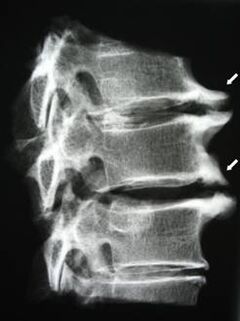
People with sciatica have severe pain in the neck, back of the head, shoulders, and even the upper limb.. . . Painful sensations arise sharply, have a burning character. Many people complain of a feeling of numbness in the back of the head, crawling on the arm, sensory and movement disorders in the upper limb.
What to do if your neck hurts, it hurts to turn your head and it is difficult to move your arm? Seek immediate medical attention. Cervicobrachial sciatica requires serious treatment that you cannot do on your own.
Diseases of the thyroid gland
Most thyroid pathologies are not accompanied by painful sensations. And only in people with acute thyroiditis (inflammation of the thyroid gland), the front of the neck hurts. In addition, patients have an increase in body temperature, chills, general weakness, muscle aches and other signs of intoxication. Upon closer inspection, an enlarged and painful thyroid gland may be felt. In some cases, several dense infiltrates are found.
For many people, the neck hurts after a diagnostic puncture of the thyroid gland. Unpleasant sensations persist for several days. The cause of the pain is soft tissue trauma during the procedure.
Inflammatory diseases of the cervical organs
With inflammatory diseases of the pharynx and larynx, a person often has a sore throat, and the lymph nodes in the neck become inflamed. The cause of the pathology can be hypothermia, infections, use of low-quality alcohol or accidental contact with the mucous membranes of chemicals.Neck pain, which worsens when swallowing, indicates involvement of the pharynx, larynx, or esophagus. . .
Diseases in which the neck and throat hurt:
- pharyngitis;
- laryngitis;
- angina;
- diphtheria;
- Infectious mononucleosis;
- scarlet fever;
- epiglottitis;
- pharyngeal abscess;
- chemical burn of the esophagus.
The throat and neck on the sides are often sore with a cold. The causes of the disease are hypothermia, sudden inhalation of cold air or a long walk in the cold. A good rest, hot tea and some analgesic tablets help to cope with the disease.
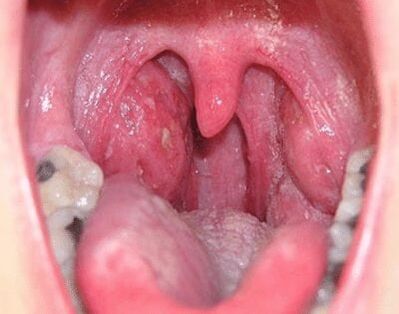
If you have a sore throat in the lower neck, you should suspect pharyngitis or tracheitis (inflammation of the larynx or trachea). The development of diseases is provoked by a viral infection, the inhalation of hot, cold or polluted air. If the throat and neck hurt from behind, a pharyngeal abscess is possible. The pathology is characterized by an increase in temperature, difficulty swallowing, loss of appetite, general weakness and apathy.
Damage to the central or peripheral nervous system
Severe pain occurs with subarachnoid hemorrhages. The person himself describes them as a "blow to the head" and a throbbing sensation in the back of the head. The patient develops nausea, vomiting, confusion, meningeal signs. A stiff neck develops about 6 hours after the first pain.
Meningitis has a similar clinical picture.. . . A person with inflammation of the meninges has a very bad head and neck. Painful sensations increase with movement. During the examination, the patient reveals the tension of the occipital muscles. For this reason, a person cannot bring his chin to his chest, even with outside help. Along with this, a characteristic rash appears on the patient's body.
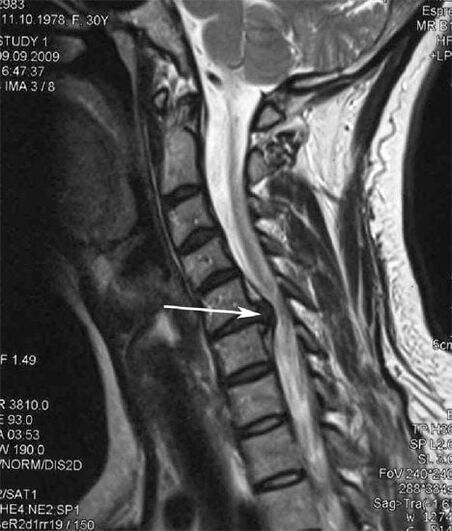
Neck pain can be caused by damage to the spinal cord or peripheral nerves, central nervous system tumors, demyelinating diseases, etc. All these diseases have a polymorphic clinical picture, and painful sensations are one of the symptoms of the pathology.
Back and spine pain can be one of the first signs of multiple sclerosis, a demyelinating disease of the central nervous system. In people with this pathology, the so-called Lermitte symptom appears. It is characterized by the sensation of an electric shock to the back of the head, which occurs when the head is tilted forward.
Malignant or benign neoplasms
Various cancers of the cervical spine, pharynx, esophagus, thyroid, or other organs can also cause pain. Also, pain can occur in people with pancost cancer, a malignant neoplasm located subpleurally at the apex of the lung.
Muscle damage
In some cases, the lateral muscles of the neck hurt in people with myositis, polymyalgia, fibromyalgia. These diseases are characterized by damage to the skeletal muscles of any localization. If a person notices pain in the neck muscles from the side for no apparent reason, they may have one of these diseases.
If you have muscle pains in your neck at the front of your larynx, remember if you've had to scream loudly, sing, or talk for a long time recently. So the cause of the discomfort is the overload of the vocal cords.
Other possible causes of neck pain
Left chest and collarbone pain extending into the neck usually indicates heart disease. In people with a similar pain syndrome, angina pectoris, arrhythmias, heart failure or heart attack are detected.
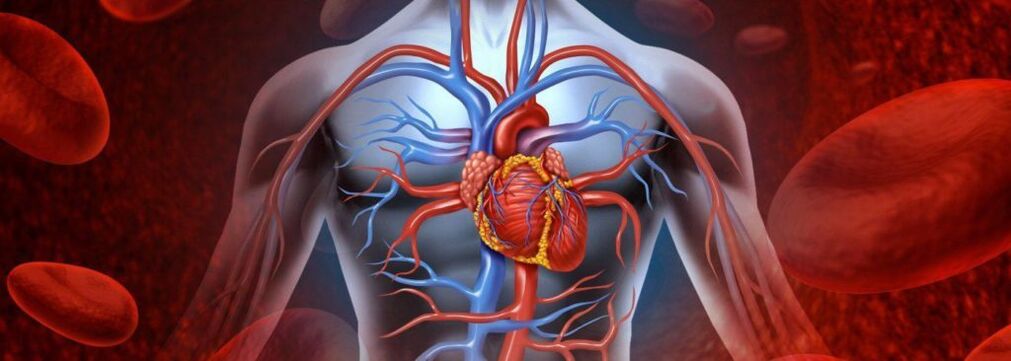
The neck on the sides can hurt in people with caries, diseases of the oropharynx or nasopharynx. Unpleasant sensations can occur with tonsillitis - inflammation of the tonsils. If you notice pain in the shoulders near the neck, it may be due to scoliosis of the cervical and / or thoracic spine.
Why do the lymph nodes in the neck hurt?
The cervical lymph nodes are located on the sides of the neck, along the sternocleidomastoid muscle. They are normally small in size, but you can hardly find them. However, in some cases, the lymph nodes in the neck can increase in size and hurt. This phenomenon should be alarming, as it can indicate serious diseases and even malignant tumors.
Most often, the pain of the lymph nodes in the neck occurs due to their inflammation (lymphadenitis).Pathology develops against the background of tonsillitis, rhinitis or acute respiratory viral infection. . . The reason may be their defeat by metastases of tumors of the pharynx, esophagus, lungs or other organs.
Signs of cervical lymphadenitis:
- swollen lymph nodes. In some cases, their size can increase to 2-3 centimeters or more;
- the appearance of hyperemia and edema. Lymphadenitis is usually accompanied by redness of the skin and the appearance of swelling in the area of inflamed lymph nodes;
- painful sensations. A person has pain behind the ear and neck on one or both sides at the same time. It is difficult for the patient to turn his head and perform active movements with his shoulders;
- symptoms of intoxication. The body temperature rises, chills appear, general weakness, apathy, headache. The phenomena of intoxication appear in the acute form of lymphadenitis.
Cervical lymph nodes can become inflamed after prolonged exposure to a draft. Most often, there is pain in the ear and under the ear on the neck. Slightly enlarged and painful lymph nodes can be felt under the patient's skin.
Have your lymph nodes in your neck swollen and hurt, but you don't know what to do? It is best to go to the doctor right away. The specialist will carefully examine you and prescribe an additional examination. After passing the necessary tests, you can find out the cause of the pathology.
The reasons why the head and neck hurt more often
According to statistics, 70% of people with frequent headaches (headache) have not only headaches, but also the cervical spine.Neck pain can be caused by the irradiation of painful sensations or have a vertebrogenic nature. Many men and women with osteochondrosis have a sore neck and headache. Of all headaches, 15-20% have a cervicogenic nature.
The reasons why a person has pain in the neck, head and temples:
- overwork;
- violation of blood circulation in the tissues of the brain;
- diseases of the cervical spine;
- inflammation of the sinuses;
- high blood pressure;
- heart disease;
- period of menopause;
- migraine;
- overload of the shoulder girdle muscles.
The most common type of headache is tension headache (HDN). It occurs due to mental tension, severe mental activity, or prolonged spasm of the muscles of the neck, back, and upper limb girdle. For tension headaches, neck massage, reflexology and a short intake of pain relievers help a lot.
If you have frequent neck pain and dizziness, don't hesitate with the treatment. Massage of the cervical neck area and acupuncture help to cope with HDN. If after a course of massage you continue to feel pain, you need a full examination. Maybe there's a serious problem behind the mundane headache.
For what reasons does the child have pain in the neck?
A sore throat in a child appears with angina, acute respiratory viral infections, rubella, mumps, meningitis and some other infectious diseases. If a child has neck pain on only one side, the cause may be otitis media, pharyngeal abscess, lymphadenitis or trauma.
Speaking of childhood diseases, we should mention stiff neck. The pathology is characterized by a congenital shortening of the sternocleidomastoid muscle. Due to the defect, the baby's head takes a forced position. It is constantly raised and in the opposite direction to the defective muscle. A child with a stiff neck also has neck pain. The main reason for this is constant muscular effort.
What to do?Get your baby right away and go to the hospital. . . Timely seeking medical assistance will help identify the problem in time and start treatment.
Which doctor should I contact? It is best to see your pediatrician first. After the examination, the pediatrician will diagnose and prescribe treatment or send you a consultation with a narrow specialist.
How to relieve acute neck pain
Some people, after hypothermia or weight lifting, complain: "My neck hurts, I can't turn my head. . . ". This symptom indicates acute inflammation of the spinal roots or neuralgia of the occipital nerve. If you experience such pains, you should always consult a doctor.
To relieve pain, you can use tablets, gel or a patch. In this case, it is better to use non-steroidal anti-inflammatory drugs, corticosteroids or warming ointments. Dry heat also has a good effect (heat pad, heated sandbag or cereal).
Not sure which doctor to consult if you experience unbearable neck pain? Since these neck pains usually indicate inflammation or pinched nerves, it's best to see a neurologist right away. He will prescribe adequate treatment and, if necessary, perform a drug block. Injecting corticosteroids can relieve pain quickly and effectively.
How to treat vertebral neck pain
Neck pain is treated by an orthopedic traumatologist or vertebrologist. After injuries and operations in the cervical region, doctors prescribe the patient to wear a Shants collar. Pain relievers and muscle relaxants are used to relieve pain. To relieve muscle spasms and restore normal biomechanics of the shoulder girdle, experts recommend a series of exercises. Therapeutic gymnastics allows you to develop muscles, return normal mobility to the spine.
Which doctor should you go to if your neck hurts during pregnancy? First of all, you should visit your gynecologist. He will examine you and send you a consultation with a specialist who will prescribe appropriate treatment.





























